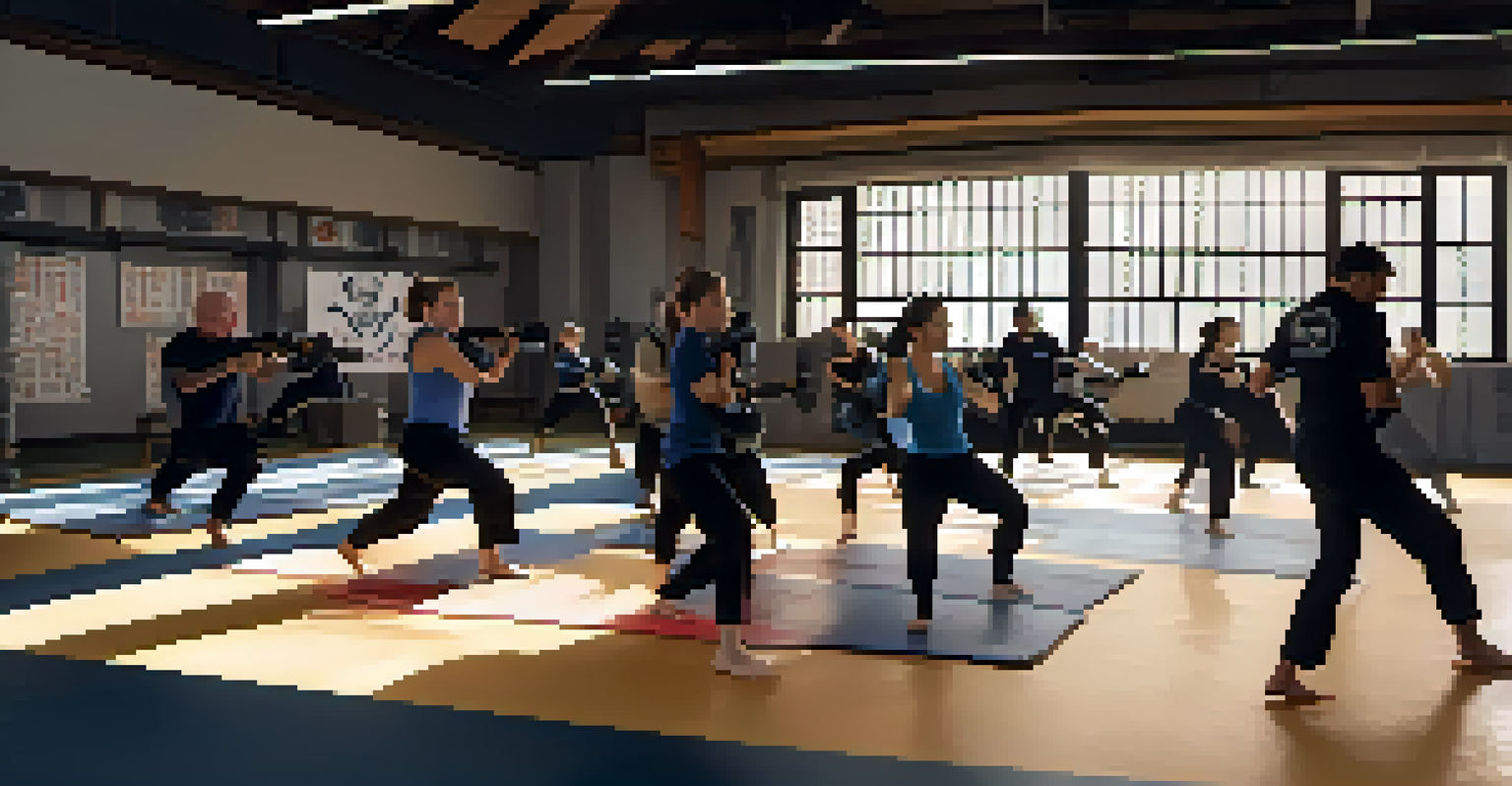Debunking the Myth of 'Fight or Flight' in Self Defense

Understanding the 'Fight or Flight' Response
The 'fight or flight' response is a well-known physiological reaction to perceived danger. It prepares your body to either confront the threat or escape from it, triggering adrenaline and other hormones. However, this binary approach oversimplifies our reactions in self-defense situations, where more nuanced responses can occur.
In the face of danger, our instincts can sometimes betray us. Recognizing the complexity of our responses is the first step toward empowerment.
Many people assume they will either fight or flee when faced with danger, but the reality is often more complex. For instance, some individuals might freeze, becoming paralyzed by fear instead of acting decisively. This multitude of responses can affect how one reacts in a self-defense scenario, making it essential to understand beyond just fight or flight.
Recognizing that there are varying responses can help us better prepare for real-life confrontations. By understanding this complexity, individuals can develop strategies that cater to their unique reactions rather than relying solely on the fight or flight mentality.
The Role of Freeze in Self-Defense
While 'fight or flight' captures the essence of instinctive reactions, the 'freeze' response often goes unnoticed. Freezing can occur when a person feels overwhelmed and unable to make a decision, effectively immobilizing them. This response can be particularly common in high-stress situations, where clarity fades and fear takes over.

Consider a deer caught in headlights, unable to move as danger approaches. Similarly, people may find themselves momentarily paralyzed in threatening situations. This freeze response doesn't mean they lack courage; it simply highlights the complex nature of human reactions to fear and stress.
Beyond Fight or Flight Responses
Self-defense reactions are more complex than just fight or flight, including responses like freezing, which can affect decision-making in crisis situations.
Understanding the freeze response is vital for self-defense training. By acknowledging the possibility of freezing, individuals can work on strategies to counteract this reaction, ultimately improving their ability to respond effectively in a crisis.
Cognitive Overload and Decision-Making
In a self-defense scenario, cognitive overload can significantly impact decision-making. When faced with a threat, the brain processes multiple stimuli, which can lead to confusion and indecision. This mental scramble can cause individuals to hesitate or act impulsively, neither of which may be ideal.
The greatest weapon against stress is our ability to choose one thought over another.
Imagine trying to find your keys in a cluttered room while someone is banging at the door. The stress can make it challenging to focus, leading to poor choices. In self-defense, the stakes are even higher, as the wrong decision can have serious consequences.
Training that includes scenarios involving cognitive overload can better prepare individuals. By practicing under stress, people can learn to manage their thoughts and make sound decisions, even when their brains are racing.
Emotional Factors in Self-Defense Reactions
Emotions play a significant role in how we respond to threats, often influencing our choices in a self-defense context. Fear, anger, and anxiety can cloud judgment, making it difficult to react calmly and effectively. These emotional factors can trigger different responses beyond just fight or flight.
For example, someone may feel an overwhelming urge to protect loved ones, prompting them to act aggressively despite their natural inclination to flee. Understanding the impact of emotions on decision-making can help individuals prepare for real-life confrontations.
Emotional Impact on Reactions
Emotions such as fear and anxiety significantly influence how individuals respond to threats, often triggering varied reactions beyond instinctive responses.
Self-defense training that incorporates emotional awareness can be beneficial. By learning to recognize and manage emotions, individuals can improve their response times and clarity in high-pressure situations.
The Need for Comprehensive Self-Defense Training
The myth of 'fight or flight' highlights the importance of comprehensive self-defense training. Relying solely on instinctive responses can leave individuals unprepared for the complexities of real-life threats. Training should encompass various responses and strategies to enhance overall effectiveness.
Consider martial arts classes that teach not just physical techniques but also mental resilience. These classes often simulate stressful situations, allowing participants to practice managing their reactions. Such training can help individuals feel more confident in their abilities to handle a range of responses.
Additionally, incorporating mental exercises into training can further prepare individuals. Practicing visualization techniques and role-playing scenarios can create a more rounded approach to self-defense, equipping participants with tools to handle whatever arises.
The Importance of Context in Self-Defense
Context plays a crucial role in determining how someone will respond to a threat. Factors such as the environment, the presence of others, and personal experiences can all influence reactions. Understanding these variables can provide insight into why different individuals might react differently in similar situations.
For instance, someone who has previously faced a violent encounter may respond more aggressively than someone who's never experienced such a threat. This highlights the need for personalized self-defense strategies that take an individual's unique background into account.
Need for Comprehensive Training
Effective self-defense training should encompass a range of responses, emotional awareness, and context assessment to prepare individuals for real-life threats.
Learning to assess context can enhance self-defense training. By considering various scenarios and their implications, individuals can prepare themselves for a broader range of possible outcomes.
Empowering Yourself Beyond the Myth
Empowerment is key when it comes to self-defense, and understanding the nuances of the fight or flight response can enhance this feeling. Instead of being limited by the myth, individuals can embrace a more holistic view of their capabilities. This knowledge fosters confidence and helps people feel more prepared for potential threats.
Engaging in self-defense classes, scenario training, and emotional awareness exercises can all contribute to personal empowerment. These practices encourage individuals to harness their unique responses, whether fighting, fleeing, or freezing, into effective strategies.

Ultimately, by moving beyond the simplistic fight or flight narrative, we can cultivate a deeper understanding of self-defense. This approach not only equips individuals with skills but also empowers them to take control of their reactions in any situation.